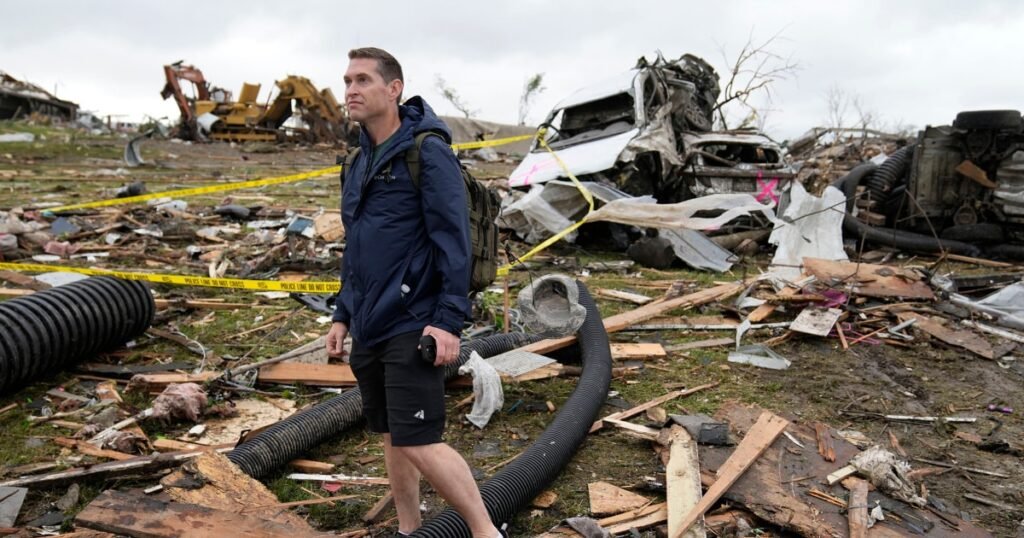Central Iowa was struck by a devastating tornado that caused significant damage to rural communities and resulted in an unknown number of fatalities. The town of Greenfield, with a population of about 2,000 people, was particularly hard-hit, with at least 12 people treated in hospitals and several deaths confirmed. The severe weather is expected to move towards the Southern Plains and Mississippi Valley, with more tornadoes, large hail, and wind damage likely in Arkansas, Louisiana, and Texas.
Aerial footage from Greenfield showed entire streets turned to wreckage, with debris scattered among broken trees and demolished cars. Nearby towns like Red Oak and Nevada also experienced tornado damage, with wind turbines destroyed and a semi-truck toppled due to extreme conditions. Iowa Gov. Kim Reynolds declared a disaster in 15 counties and was set to visit the area to assess the situation. The National Weather Service announced plans to deploy teams to survey the tornado damage and provide further information.
In Colorado, large hailstones caused damage to buildings and vehicles, with reports of baseball-sized hail falling in some areas. In Omaha, Nebraska, significant rainfall led to flooding that swept away cars and left some residents stranded. School football coach Mike Troy described his home as being on a newly-created island, with water levels not deep enough to warrant a rescue. Thousands of energy customers in Texas and Wisconsin were without power as a result of the severe weather.
Overall, the tornado in Central Iowa caused widespread destruction and loss of life, prompting emergency response efforts and assistance from state and local authorities. The impact of the severe weather extended beyond Iowa, with states like Colorado and Nebraska also experiencing damaging hail and flooding. The aftermath of the tornado in Greenfield and surrounding areas serves as a reminder of the destructive power of natural disasters and the importance of preparedness and response measures in the face of such events.












